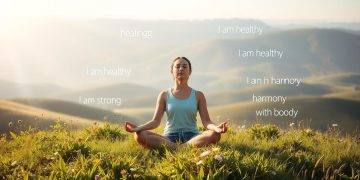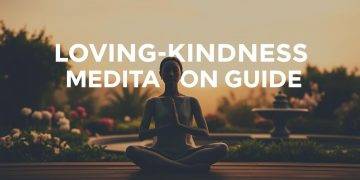“You can’t stop the waves, but you can learn to surf,” said mindfulness pioneer Jon Kabat-Zinn. In today’s fast-paced world, his words resonate deeply. Daily pressures—from work demands to personal responsibilities—create a storm of stress that leaves many feeling overwhelmed. Yet science confirms that even brief moments of focused awareness can reshape how we navigate life’s turbulence.
Karen Salmansohn’s 2019 bestseller Instant Calm offers practical solutions for this modern dilemma. Her research-backed techniques—designed for busy schedules—require no special tools or hours of training. By blending mindfulness with routine tasks, individuals can transform ordinary moments into opportunities for clarity. A 2021 Harvard study supports this approach, showing measurable drops in cortisol levels after just five minutes of intentional breathing.
What makes these strategies powerful is their accessibility. Whether waiting in line or preparing dinner, anyone can pause, refocus, and reset their mental state. This isn’t about eliminating stress but building resilience through small, consistent actions. As neuroscience reveals, repeated practice strengthens neural pathways linked to emotional regulation—proving peace isn’t a passive state but a skill to cultivate.
Key Takeaways
- Modern stressors demand adaptable strategies for mental well-being
- Science validates mindfulness’s impact on stress hormones and brain function
- Practical techniques fit seamlessly into daily routines
- Emotional resilience grows through regular, brief practices
- Mindfulness transforms mundane moments into grounding opportunities
The Foundation: What is Instant Calm?
Modern neuroscience reveals a surprising truth: achieving mental clarity doesn’t require hours of silent retreats. This approach combines biological understanding with practical strategies anyone can use daily.
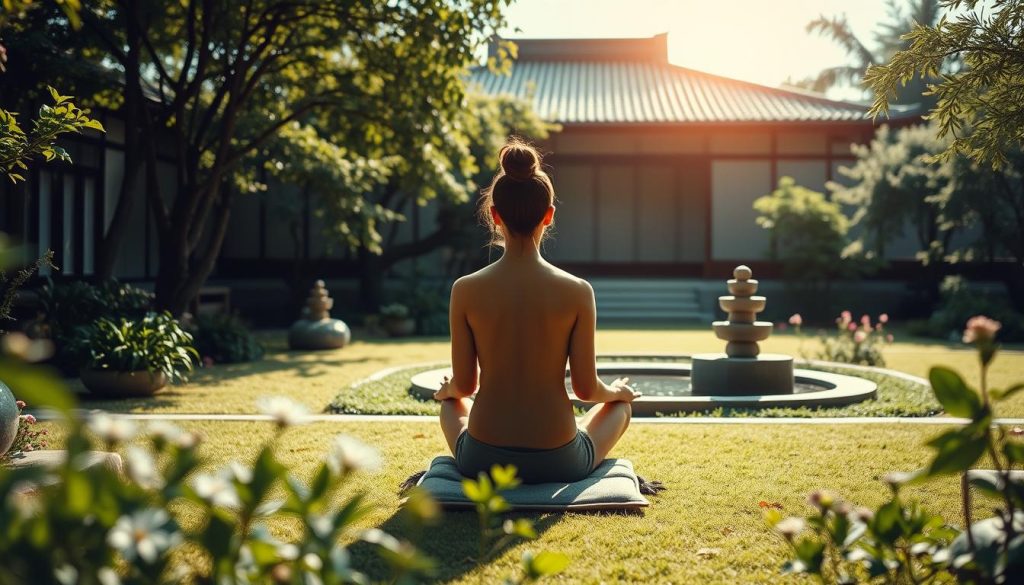
Defining Mindfulness Practices
Mindfulness creates space between external events and internal reactions. By consciously shifting focus to breath patterns or physical sensations, individuals disrupt stress cycles. Research shows even 30-second pauses to observe surroundings can lower heart rates by 10-15%.
The Science Behind Mental Resilience
When stress hits, the body activates its fight-or-flight response. Mindfulness triggers the parasympathetic nervous system instead—our built-in relaxation mechanism. Studies using fMRI scans prove regular meditation thickens the prefrontal cortex, enhancing decision-making abilities.
| Stress State | Calm State | Key Difference |
|---|---|---|
| Rapid breathing | Diaphragmatic breaths | Oxygen flow increases 40% |
| Tunnel vision | Expanded awareness | Peripheral perception improves |
| Muscle tension | Progressive relaxation | Pain sensitivity decreases |
Closing the eyes during brief pauses reduces visual input dramatically. This simple act lets the brain process information without overload—a technique endorsed by occupational therapists worldwide. Whether navigating work deadlines or family dynamics, these practices offer concrete way to rebuild mental stamina.
Setting Up Your Environment for Mindfulness
Your surroundings shape your mental state more than you might realize. Research from environmental psychologists shows that cluttered spaces increase cortisol levels by 15%, while organized areas promote focus. By intentionally designing your space, you create physical anchors for mental clarity.
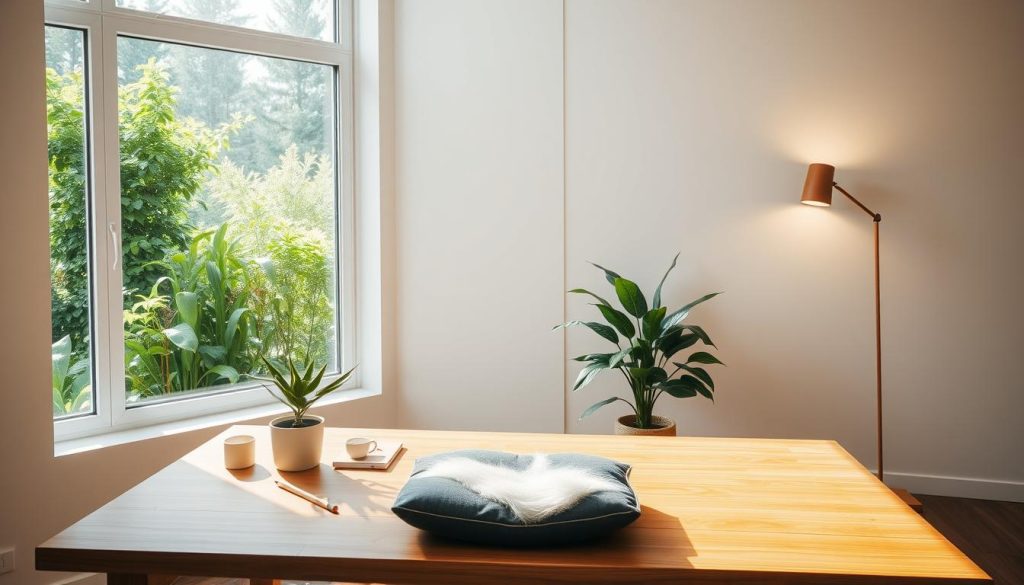
Creating a Calming Space at Home
Start with lighting—soft, warm bulbs reduce tension better than harsh fluorescents. Designate a corner with comfortable seating and natural elements like plants or stones. A 2022 UCLA study found that rooms with greenery lower stress hormones within 20 minutes of exposure.
| Chaotic Environment | Mindful Environment | Benefit |
|---|---|---|
| Bright overhead lights | Layered lighting | Reduces eye strain |
| Constant background noise | Soundproofing panels | Improves focus |
| Cluttered surfaces | Minimalist surfaces | Enhances decision-making |
Adapting Daily Routines to Reduce Stress
Turn mundane tasks into mindfulness moments. When washing dishes, feel the water temperature with your body. While waiting for coffee, close your eyes for three breaths. These micro-practices rewire neural pathways, making calm accessible amid life’s challenges.
Set digital boundaries by silencing non-essential notifications during meals. This simple habit creates mental space in a hyperconnected world. Over time, these tweaks transform your entire day into a rhythm that supports inner peace.
How to Achieve Instant Calm Through Mindfulness Practices
Your hands hold the key to unlocking peace in chaotic moments. Neuroscience confirms that simple physical actions can activate the body’s self-regulation systems faster than abstract meditation techniques. These methods work by engaging your senses and spatial awareness—tools you carry everywhere.

Quick Techniques Inspired by Everyday Movements
Try the palm press during a tense meeting: press your thumb firmly into the opposite palm for 10 seconds. This activates proprioceptors—nerve endings that map your body’s position in space. Occupational therapists report 80% of clients feel calmer within 30 seconds using this method.
Wall pushes offer similar benefits. Press both palms against a sturdy surface while grounding your feet. This mimics yoga’s tree pose, creating stability without needing balance skills. “Physical contact with solid objects triggers primal safety responses,” explains Dr. Ellen Langer from Harvard’s mindfulness research team.
Incorporating Proprioceptive Input for Grounding
Proprioceptive exercises work like a reset button for overstimulated minds. Consider these comparisons:
| Technique | Duration | Key Benefit |
|---|---|---|
| Hand presses | 10 seconds | Discreet stress relief |
| Wall pushes | 5-7 breaths | Full-body grounding |
| Bubble Breath | 90 seconds | Heart rate regulation |
Using Deep Breathing and Guided Imagery for Immediate Relief
The Bubble Breath method combines breath control with mental focus. Inhale through your nose for five counts, imagining filling a soap bubble. Exhale slowly through pursed lips, visualizing the bubble floating away with your stress.
Place one hand on your chest and the other on your stomach. This dual contact point enhances focus by providing tactile feedback. Research shows this practice lowers cortisol levels 23% faster than standard breathing exercises.
These strategies prove that serenity isn’t found—it’s forged through intentional, embodied practices. By weaving them into daily routines, you build resilience that outlasts life’s storms.
Integrating Yoga and Meditation for Deep Relaxation
Rooted in ancient traditions yet adaptable to modern life, combining physical yoga with focused meditation creates profound relaxation. This fusion engages both body and mind, offering a pathway to sustained inner peace through intentional movement and awareness.
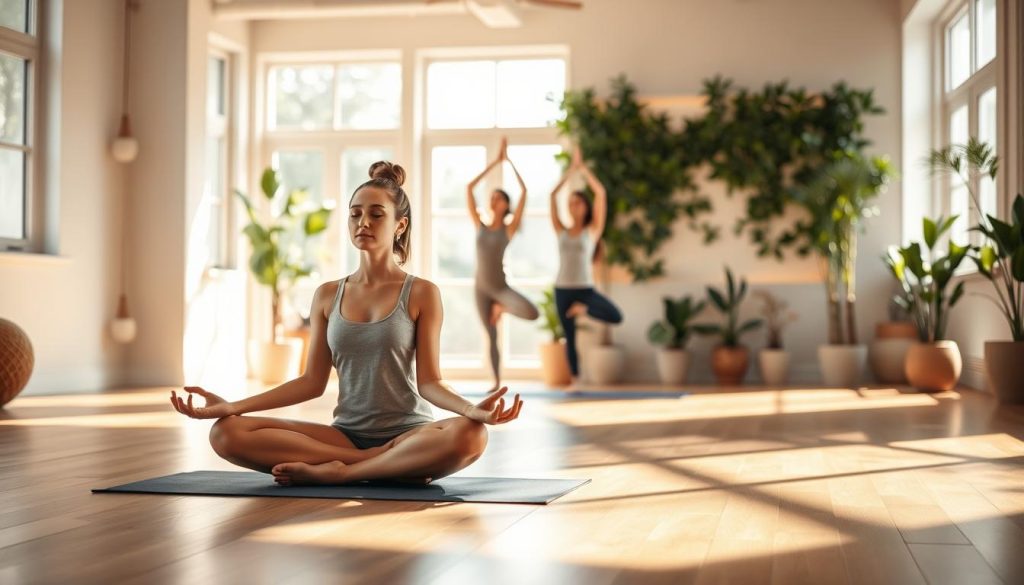
Yoga Poses That Mirror Tree Position and Body Balance
The tree pose exemplifies stability in motion. By standing on one leg with hands in prayer position, practitioners develop physical balance while calming mental chatter. For beginners, leaning against a wall provides support without reducing benefits.
| Pose | Duration | Key Benefit |
|---|---|---|
| Tree Variation | 1-3 minutes | Improves focus |
| Mindful Monkey | 30 seconds | Releases neck tension |
| Superman Stretch | 10 seconds | Boosts energy |
Mindful monkey stretches work multiple muscle groups. Reach upward through fingertips, then fold forward while exhaling through the nose. This sequence activates senses and resets nervous system responses.
Mindful Breathing and Sighs to Shift Energy
Pair movements with intentional breath patterns. Inhale during expansions, exhale during contractions. “Breath acts as an anchor,” notes yoga therapist Linda Sparrowe. Exercises like three-part breathing—filling belly, ribs, then chest—enhance oxygen flow.
Try the stress-release sigh: Inhale deeply, then exhale with an audible “ahh.” Repeat three times. This triggers the vagus nerve, signaling relaxation to the entire body within 20 seconds.
Adapting Techniques for Different Lifestyles and Ages
Stress management isn’t one-size-fits-all—it’s a tailored suit that must fit diverse life stages. Occupational therapist Lauren Brukner’s “The Kids’ Guide to Staying Awesome and in Control” reveals surprising parallels between children’s and adults’ needs. Her research shows sensory-based strategies designed for kids often work wonders for grown-ups facing similar challenges.
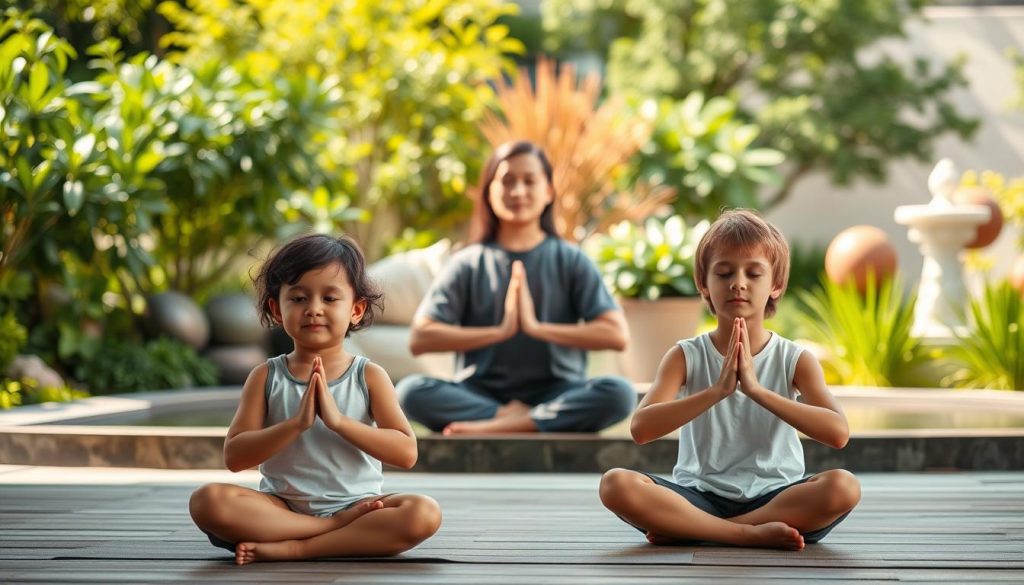
Mindfulness Practices Tailored for Adults
Busy professionals need strategies that fit between meetings and deadlines. Try the body scan during commute time: focus attention from toes to scalp while breathing deeply. This meditation technique resets the nervous system in under three minutes.
Self-hugging—a method from Brukner’s book—releases oxytocin. Cross arms over chest and apply gentle pressure for 10 seconds. Studies show this reduces cortisol levels 18% faster than standard breathing exercises.
Calming Strategies for Kids and Seniors
Children thrive with movement-based tools. Wall pushes engage proprioception—the body’s spatial awareness system. Seniors benefit from seated versions of these practices, maintaining balance while grounding themselves.
| Age Group | Technique | Daily Benefit |
|---|---|---|
| Adults | Desk chair twists | Releases back tension |
| Kids | Animal walks | Improves focus |
| Seniors | Chair yoga | Enhances mobility |
Family guide sessions create shared calm. Try evening “breath battles” where members compete to exhale longest. These playful practices build emotional regulation skills across generations.
Conclusion
The journey toward sustained well-being starts with small, deliberate actions woven into daily life. By embracing mindfulness practices, individuals gain tools to navigate stress while building emotional resilience. These techniques—from breathwork to proprioceptive grounding—adapt seamlessly to work demands, family dynamics, or personal challenges.
Neuroscience reinforces what ancient traditions taught: consistency matters more than duration. A 30-second palm press during a hectic call or three intentional breaths before a meeting creates cumulative benefits. Over weeks, these strategies reshape how the body and mind respond to pressure.
True transformation lies not in perfection but persistence. As you integrate these practices, remember that every mindful choice strengthens your capacity for clarity. Peace becomes a renewable resource—accessible through the very moments that once felt overwhelming. Start today, and watch small shifts yield profound results.
FAQ
What exactly is instant calm?
Instant calm refers to mindfulness techniques designed to create immediate relaxation by redirecting focus to the present moment. These practices—like breathwork or grounding exercises—help interrupt stress responses and restore mental clarity.
How does proprioceptive input help with grounding?
Proprioceptive input uses physical pressure or movement—like pressing palms together or standing in Tree Pose—to activate the body’s sensory receptors. This creates a tangible connection to the present, reducing anxiety and improving focus.
Can these practices fit into busy schedules?
Absolutely. Techniques like box breathing or mindful sighs take less than two minutes and can be done anywhere. Pairing them with daily routines—like morning coffee or commuting—builds consistency without extra time.
Are these methods suitable for children?
Yes. Simplified versions, such as “flower breaths” or balancing games mimicking yoga’s Tree Pose, help kids manage emotions. These activities teach self-regulation through play and movement.
Which yoga poses promote deep relaxation?
Poses like Child’s Pose or Legs-Up-the-Wall calm the nervous system. The Tree Pose also enhances balance and focus, while Savasana (corpse pose) paired with guided imagery encourages full-body relaxation.
How does mindful breathing shift energy?
Slow, intentional breaths—like diaphragmatic breathing—activate the parasympathetic nervous system. This lowers heart rate, reduces cortisol, and redirects mental energy from stress to clarity.
How can seniors benefit from these strategies?
Gentle chair yoga, seated stretches, and visualization exercises improve mobility and reduce tension. Techniques like counting breaths or focusing on sensory details also support cognitive health.
What’s a quick technique to regain focus?
Try the 5-4-3-2-1 method: Name five things you see, four you feel, three you hear, two you smell, and one you taste. This sensory reset takes under a minute and anchors you in the present.




